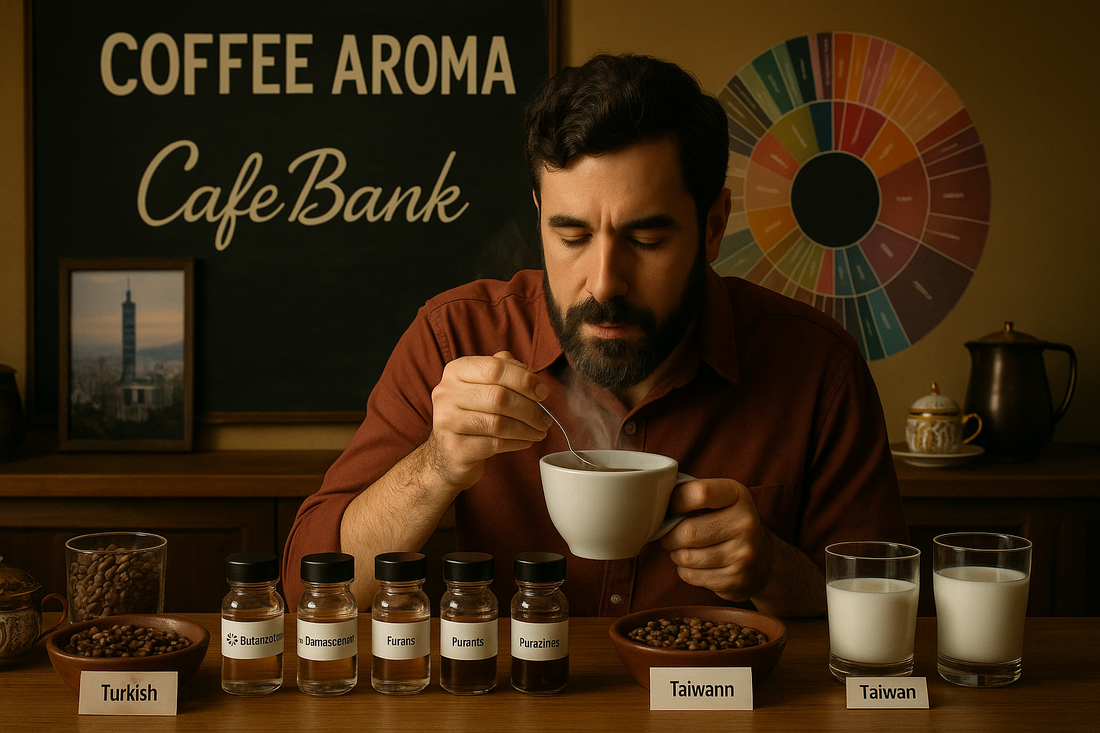
Coffee Aroma
正啟 GLOBALEYESShare this news
Unroasted green coffee beans do not have significant aromatic qualities. It's through roasting that numerous aromatic compounds are created, forming coffee's distinctive aroma. Most people perceive flavor primarily through aroma, as our tongue can only detect basic tastes like sour, sweet, bitter, salty, and umami. When aromatic compounds sensed by our nose combine with taste sensations from our tongue, we experience what we call flavor.

However, complex coffee aromas are heavily influenced by the chemical composition of the green beans themselves. Different aromatic compounds occur in varying concentrations depending on factors such as bean variety, growing conditions, climate, fruit ripeness, and processing methods.

Which Compounds Create Aroma?
The aromatic substances in coffee result from various carbohydrates, proteins, and acids. During the roasting process, these substances transform into aromatic molecules. Different compounds develop distinct sensory characteristics during roasting, and the roast degree directly affects the aroma profile that we experience.

How is Aroma Perceived?
We know volatile aromatic compounds form during coffee roasting. However, it's essential to understand that aroma is perceived through various mechanisms:
-
Formation of Volatile Compounds
Over 900 aromatic volatile compounds are generated during roasting, yet humans can perceive only about 30 of these as aroma or flavor. Most compounds remain undetectable, and the perceived aroma depends heavily on the balance and combination of these compounds. -
Interaction with Sensory Receptors
When smelling dry ground coffee, aromatic molecules directly interact with olfactory receptors. When coffee grounds mix with water, different molecules get extracted, significantly altering our sensory experience. Polarity (chemical attraction to water) greatly influences how volatile aromatic compounds are extracted into the beverage.

During brewing, highly polar molecules like 2,3-butanedione are extracted first, providing initial sensory notes, while less polar compounds such as β-damascenone take longer to be extracted in perceptible amounts. Simply put, different compounds are extracted at different rates, allowing us to sense distinct aromas at different times during brewing.

Moreover, interactions between compounds can alter our sensory perception. For instance, 2,3-butanedione, known for caramel-like aromas, enhances sweetness perception in coffee, even though it doesn't add actual sweetness.

Aroma and Sensory Enhancement
A neuroscientist specializing in human memory, sensation, and perception highlights that the balance of aromatic compounds significantly affects perceived flavor intensity. Experiments demonstrate this clearly—when strawberry aroma is added to a sucrose solution of identical sweetness, participants perceive the solution as sweeter.

Understanding how aroma forms and how we perceive it helps us brew coffee more intentionally. Recognizing which aromatic compounds emerge at different extraction stages enables coffee drinkers to fine-tune their brewing techniques, achieving a personalized, enjoyable sensory experience with each cup.

